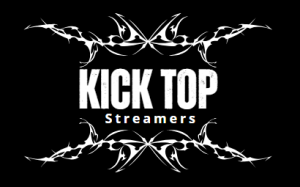With Export TikTok replays for later at risk of going the way of Vine, now is a good time to start backing up your clips. Luckily, it’s pretty easy to do with a tool like Riverside.
Getting your videos in the right format is crucial for a polished, professional look. This is especially true with TikTok, where the algorithm favors vertical videos.
How to export TikTok replays for later
One of the most common questions TikTok creators have is how to download their videos for later. This is a good question because, unlike other video platforms, TikTok does not offer a way to save videos directly from the platform without the watermark.
Fortunately, there are a few ways to get around this. The best method is to use Android’s native file manager to save your TikTok videos locally. You can also use iOS’s built-in Files app to do the same thing.
As always, it’s a good idea to back up any aspect of your digital life. This is especially true for TikTok. There are constant rumblings about a possible ban on the platform in the US, as Congressmembers have been grilling the company’s owner, Chinese tech giant ByteDance, over its perceived ephemerality. Whether or not a ban happens, it’s worth backing up your TikTok videos anyway. Here’s how to do it..
The process
TikTok is a short-form mobile video app that allows users to create and share videos ranging from 3 seconds to 60 minutes in length. It has disrupted the social media landscape and transformed the way people interact with one another.
Businesses use TikTok to engage with their audiences, build brand awareness, and drive e-commerce sales. They can create hashtag challenges, answer questions from their audience, and showcase their products using Live videos. They can also run contests to increase engagement and loyalty.
However, the platform has faced criticism over its content moderation policies and user safety. Its popularity has led to excessive screen time among users, especially young ones, which can lead to sleep deprivation and other health problems. It has also been accused of promoting negative body image and cyberbullying, and it has been involved in copyright disputes. TikTok’s owner, ByteDance, has been the subject of a US ban unless it sells its ownership stake to a U.S company.
Formats supported
The first step in creating quality TikToks is choosing the right export settings. The best settings for TikTok videos are MP4, a resolution of 1080×1920, and a frame rate of 30 or 60 frames per second. For audio, the AAC audio format and codec, sample rate 48kHz, and stereo channel should be used. For encoding, choose VBR 2-Pass or Software Encoding.
TikTok is designed to be viewed on mobile devices, so it’s important to consider the aspect ratio when creating videos. The recommended aspect ratio is 9:16, which is perfect for most smartphones.
Another important factor is file size. It’s important to keep the file size as low as possible, while still maintaining a good video quality. This can be achieved by using a modern video compression codec like H.264, which is very efficient. You should also use a two-pass encoding option, which will improve the overall quality of your video. However, this may take more time to process.
Limitations
TikTok’s strict age requirements, content restrictions, and community guidelines establish a foundation for responsible platform usage. Understanding these requirements is essential for businesses that seek to leverage the platform’s reach and build authentic connections with their audiences. These guidelines also provide an outline for maintaining compliance and avoiding potential account restrictions or bans.
The platform’s policies continue to evolve in response to user feedback and regulatory pressures. Recent rule changes include expanded creator monetization rules, new privacy settings, and stricter moderation systems. These updates are designed to create a safer, more transparent environment.
In addition, TikTok’s policy requires that users clearly label AI-generated and significantly altered content in their videos. These disclosures are mandatory for videos that use synthetic media technologies and can result in reduced visibility, demonetization, or even account restriction if not followed. The platform also proactively monitors emerging challenges and trends and may restrict activities that pose a risk to the public or users’ safety.
